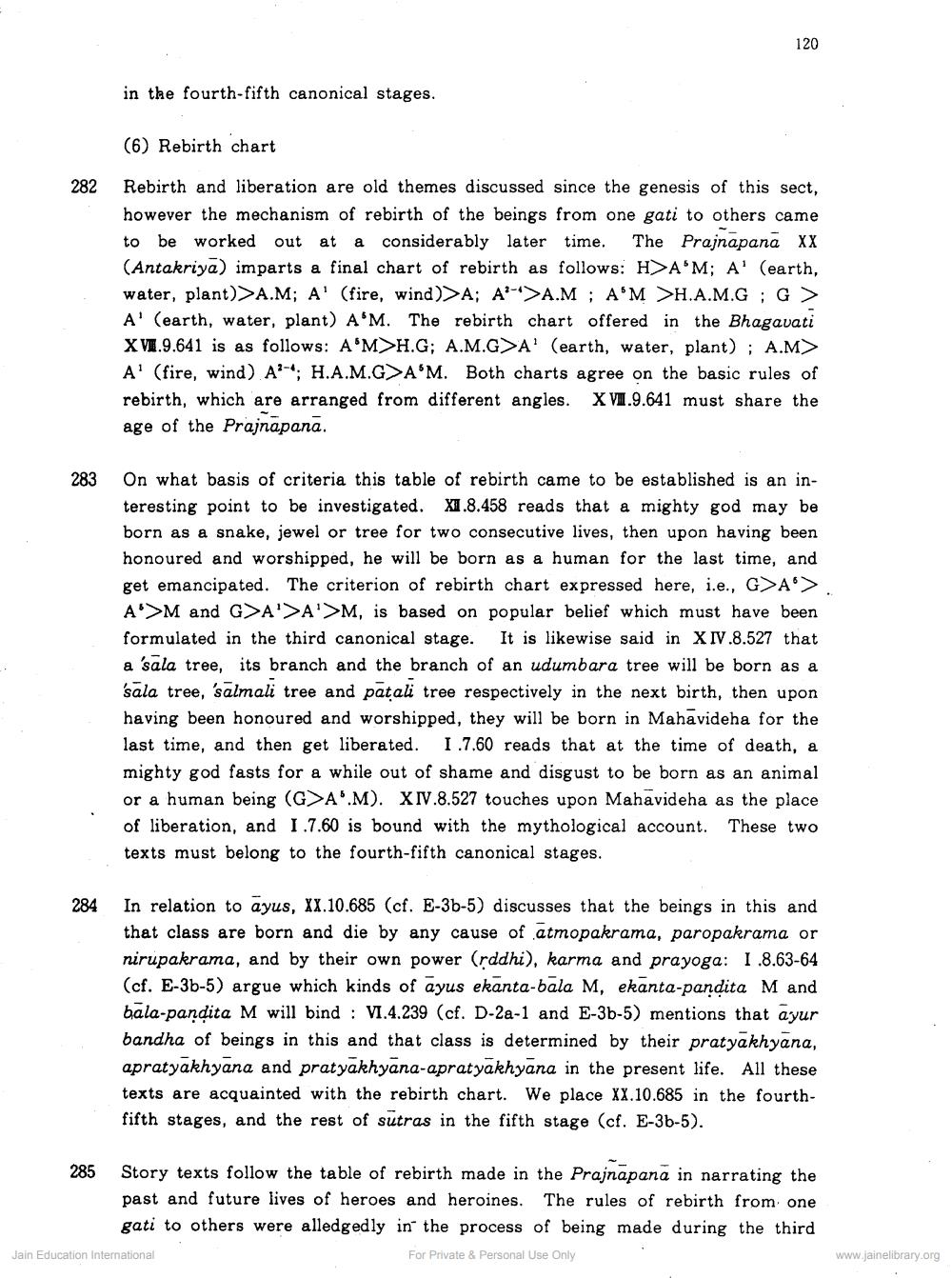________________
120
in the fourth-fifth canonical stages.
(6) Rebirth chart
282
Rebirth and liberation are old themes discussed since the genesis of this sect, however the mechanism of rebirth of the beings from one gati to others came to be worked out at a considerably later time. The Prajnapanā XX (Antakriya) imparts a final chart of rebirth as follows: H>A'M; A' (earth, water, plant)>A.M; A (fire, wind)>A; A-->A.M ; AM >H.A.M.G ; G > A' (earth, water, plant) A'M. The rebirth chart offered in the Bhagavati X V1.9.641 is as follows: A'M>H.G; A.M.G>A' (earth, water, plant) ; A.M> A' (fire, wind) AP-4; H.A.M.G>A'M. Both charts agree on the basic rules of rebirth, which are arranged from different angles. X V1.9.641 must share the age of the Prajnapana.
283
On what basis of criteria this table of rebirth came to be established is an interesting point to be investigated. X1.8.458 reads that a mighty god may be born as a snake, jewel or tree for two consecutive lives, then upon having been honoured and worshipped, he will be born as a human for the last time, and get emancipated. The criterion of rebirth chart expressed here, i.e., G>A> A>M and G>A'>A'>M, is based on popular belief which must have been formulated in the third canonical stage. It is likewise said in XIV.8.527 that a 'sala tree, its branch and the branch of an udumbara tree will be born as a sala tree, 'salmali tree and patali tree respectively in the next birth, then upon having been honoured and worshipped, they will be born in Mahavideha for the last time, and then get liberated. 1.7.60 reads that at the time of death, a mighty god fasts for a while out of shame and disgust to be born as an animal or a human being (G>A .M). XIV.8.527 touches upon Mahavideha as the place of liberation, and 1.7.60 is bound with the mythological account. These two texts must belong to the fourth-fifth canonical stages.
284
In relation to ayus, XX.10.685 (cf. E-3b-5) discusses that the beings in this and that class are born and die by any cause of atmopakrama, paropakrama or nirupakrama, and by their own power (rddhi), karma and prayoga: 1.8.63-64 (cf. E-3b-5) argue which kinds of ayus ekanta-bala M, ekanta-pandita M and bala-pandita M will bind : V1.4.239 (cf. D-2a-1 and E-3b-5) mentions that ayur bandha of beings in this and that class is determined by their pratyakhyana, apratyakhyana and pratyakhyana-apratyakhyana in the present life. All these texts are acquainted with the rebirth chart. We place XX.10.685 in the fourthfifth stages, and the rest of sutras in the fifth stage (cf. E-3b-5).
285 Story texts follow the table of rebirth made in the Prajnapana in narrating the
past and future lives of heroes and heroines. The rules of rebirth from one
gati to others were alledgedly in the process of being made during the third Jain Education International
For Private & Personal Use Only
www.jainelibrary.org




